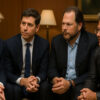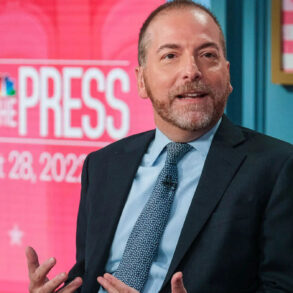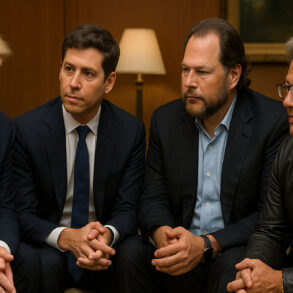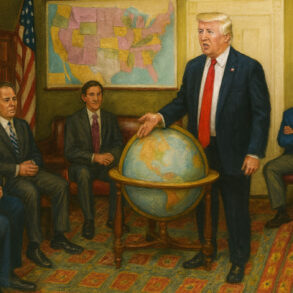The war between Russia and Ukraine began in February 2022, when Russian forces launched a full-scale invasion into Ukrainian territory. Since then, the conflict has killed hundreds of thousands of soldiers, displaced millions of civilians, and created the largest crisis between Russia and the West since the Cold War. The war has also drawn in the United States and Europe, both militarily and economically, and has tested the resilience of global alliances.
Now, after more than three years of devastation, a new development has emerged. Russian President Vladimir Putin has proposed direct peace talks with Ukrainian President Volodymyr Zelenskyy to take place in Istanbul, Turkey. It would be the first face-to-face meeting between the two leaders since the war began.
Putin’s Surprise Offer
In a late-night statement on May 11, 2025, Putin made a public proposal for talks to resume in Istanbul. He said, “We are proposing that Kyiv resume direct negotiations without any preconditions. We offer the Kyiv authorities to resume negotiations already on Thursday, in Istanbul.” Putin insisted that the talks should focus on the root causes of the conflict and that peace must be built on more than just temporary battlefield pauses.
Putin also mentioned his intention to speak with Turkish President Recep Tayyip Erdoğan to help coordinate the talks. “Our proposal, as they say, is on the table,” Putin added. He blamed Ukraine’s leadership and what he called their “curators” for putting political ambition above peace. “The decision is now up to the Ukrainian authorities and their curators, who are guided, it seems, by their personal political ambitions, and not by the interests of their peoples,” he said.
Although Putin claims he wants negotiations without conditions, Russian officials have repeatedly stated that peace must include Ukraine dropping its NATO ambitions, withdrawing from four eastern regions claimed by Russia, and accepting Russian control over those territories. These are conditions that Ukraine has rejected since the beginning of the war.
Zelenskyy’s Challenge in Return
Ukrainian President Volodymyr Zelenskyy responded publicly to Putin’s proposal, saying that he was ready to meet but only if Russia confirmed a full ceasefire first. On the social media platform X, Zelenskyy wrote, “It is a positive sign that the Russians have finally begun to consider ending the war. The entire world has been waiting for this for a very long time. And the very first step in truly ending any war is a ceasefire.”
Zelenskyy added, “There is no point in continuing the killing even for a single day. We expect Russia to confirm a ceasefire—full, lasting, and reliable—starting tomorrow, May 12th, and Ukraine is ready to meet.”
He issued a personal challenge to Putin, saying, “I will be waiting for Putin in Türkiye on Thursday. Personally. I hope that this time the Russians will not look for excuses.” His statement was interpreted by many analysts as a strategic move. If Putin shows up, Zelenskyy can argue that Ukraine is serious about peace. If Putin does not attend, Zelenskyy can blame Russia for avoiding a real opportunity to stop the war.
The Role of Former President Trump
Former President Donald Trump has been publicly pressuring both leaders to meet and negotiate. He has said that ending the war would be a historic accomplishment and a key goal of U.S. foreign policy under his administration. On May 11, Trump posted on Truth Social, “President Putin of Russia doesn’t want to have a Cease Fire Agreement with Ukraine, but rather wants to meet on Thursday, in Turkey, to negotiate a possible end to the BLOODBATH.”
He urged Zelenskyy to accept the offer without delay, writing, “Ukraine should agree to this, IMMEDIATELY. At least they will be able to determine whether or not a deal is possible, and if it is not, European leaders, and the U.S., will know where everything stands, and can proceed accordingly!”
Trump also expressed skepticism that the Russians would show up, saying, “I’m starting to doubt that Ukraine will make a deal with Putin, who’s too busy celebrating the Victory of World War II, which could not have been won (not even close!) without the United States of America. HAVE THE MEETING, NOW!”
Trump has previously promised to bring an end to the war quickly and is now pushing for both sides to agree to a short-term truce while talks continue. His involvement has become a major influence in the current diplomatic push.
European Leaders Add Pressure
The offer from Putin came just hours after the leaders of France, Germany, the United Kingdom, and Poland visited Kyiv and demanded that Russia agree to a 30-day unconditional ceasefire. These leaders warned that if Russia failed to accept the ceasefire, they would move to impose massive new sanctions targeting Russian energy and banking systems.
Zelenskyy appeared alongside them and supported the call, saying Ukraine was ready for talks if Russia agreed to stop its attacks. European leaders described the ceasefire as a “demand that must be met” and described the situation as a turning point in the war.
However, Putin pushed back against what he called European “ultimatums.” He said these proposals were full of “anti-Russian rhetoric” and did not contribute to peace. Instead, he focused on restarting talks without conditions.
Drone Attacks and Doubts
Just hours after Putin’s speech, Russian forces launched new drone attacks on Kyiv and other Ukrainian cities. Ukrainian officials said at least one person was injured and several private homes were damaged. These actions have raised concerns about whether Putin’s offer is sincere.
Putin claimed that during a recent 72-hour ceasefire around Victory Day celebrations, Ukraine attacked Russia with “524 aerial drones, 45 sea drones, and several Western missiles.” He used this to argue that previous ceasefires have failed due to Ukrainian violations. Ukraine, in turn, has accused Russia of breaking every temporary truce that was proposed, including one during Orthodox Easter.
This back-and-forth has made some observers doubt whether a true and lasting ceasefire is possible under the current conditions.
Looking Back to 2022 Talks
Putin has also brought up the draft deal that was discussed in Istanbul in 2022, shortly after the war began. That proposal included Ukraine remaining permanently neutral in exchange for international security guarantees from the United Nations Security Council, including the U.S., China, and Russia.
“It was not Russia that broke off negotiations in 2022. It was Kyiv,” Putin claimed. Russian officials now say they want the new talks to take that earlier draft into account, along with the current situation on the battlefield.
A Moment of Truth in Istanbul
The upcoming meeting on Thursday in Istanbul could be a major moment in the war—or another false start. Both sides are entering the talks with very different expectations and conditions. Zelenskyy wants a ceasefire first, while Putin wants talks first. Both leaders appear to be using the talks as a way to influence global opinion.
Anatol Lieven, director of the Eurasia Program at the Quincy Institute, said the stakes are high. “Trump has threatened to walk away from the peace process if there isn’t some kind of settlement or agreement on a ceasefire soon,” he said. “If he blames the Russians more, then full U.S. aid will continue to Ukraine and the sanctions he has threatened will be intensified. If he blames Ukraine more, then… he will suspend U.S. aid and intelligence assistance to Ukraine.”
As both leaders prepare to meet, the world will be watching to see if diplomacy can finally end the war—or if the violence will continue.








